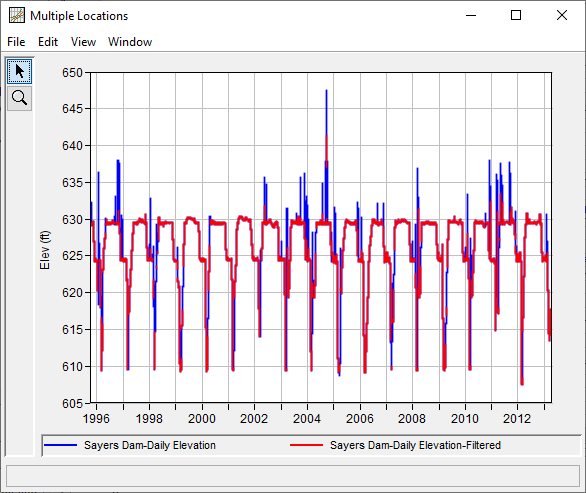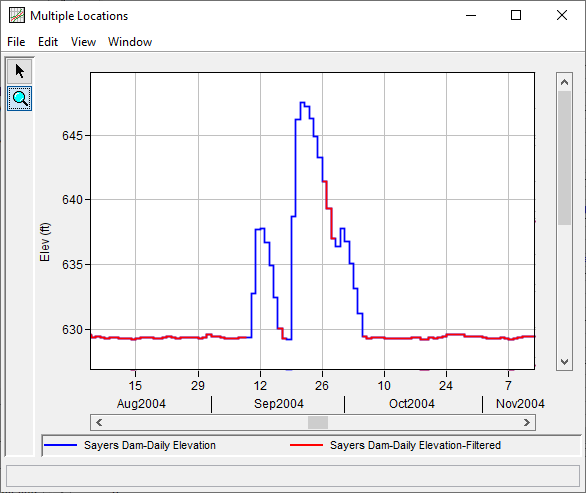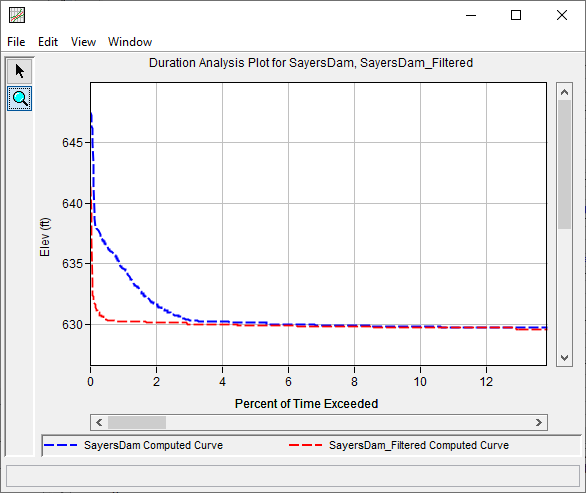This example demonstrates how to extract a time series of pool stage or elevation that is appropriate for use when estimating antecedent conditions within extreme event simulations. When determining a reasonable antecedent pool elevation for use in routing extreme events, it may be beneficial to remove pool elevations that occurred during or shortly after the occurrence of another large event since it takes time for the atmosphere and/or watershed to "deliver" another large amount of moisture/runoff to the location of interest.
The original data for this example consists of daily average pool elevations within the lake formed by Foster Joseph Sayers Dam which is located along Bald Eagle Creek near Blanchard, PA. The period of record used for this example is from 1995 to 2013. To view the data from HEC-SSP, right-click on the data record labeled "Sayers Dam-Daily Elevation" in the study explorer and then select Plot. A plot of the data will appear as shown in Figure 1.
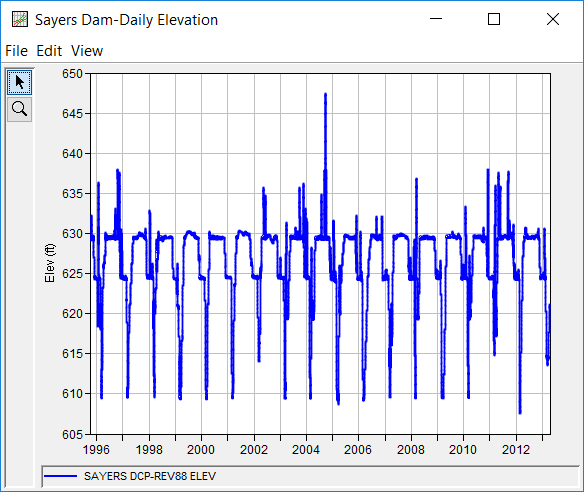
To begin extracting a time series of pool stage or elevation that is appropriate for use when estimating antecedent conditions within extreme event simulations, right click on the Sayers Dam-Daily Elevation data record and select Filter Data. Within the Filter editor, click on the Starting Pool Stage/Elevation tab. Within the Starting Pool Stage/Elevation panel, click the Filter Starting Pool Stage/Elevation check box, enter a Rate of Rise of 1 ft/day, and a Typical High Pool Duration of 5 days as shown in Figure 2.
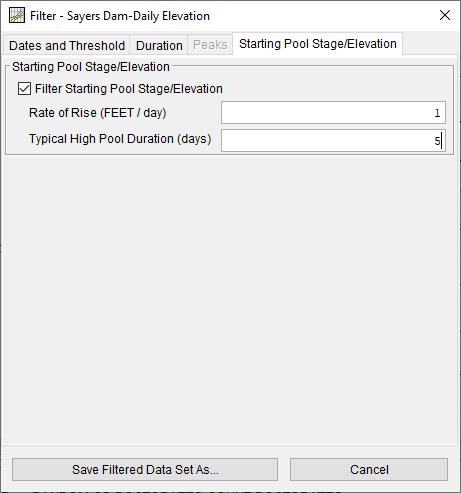
After clicking the Save Filtered Data Set As button, enter a Name of "Sayers Dam-Daily Elevation-Filtered", ensure the E-part is set to 1DAY, and the F-Part is defined as "DCP-REV88 - Filtered", as shown in Figure 3.
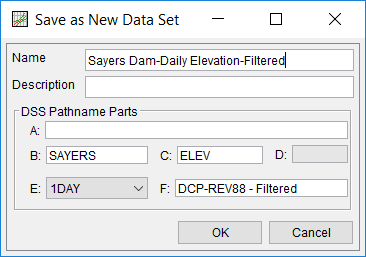
After clicking the OK button, a new data set will be added to the study. Given these inputs, "events" will be considered to start when the rate of rise exceeds 1 feet/day and "last" for 5 days. Also, if the rate of rise is found to exceed 1 ft/day on day 4, then again on day 8, the "event counter" will restart. Values between the start and end of the "event" will be discarded. The remaining values can be considered reasonable to use when determining appropriate antecedent pool elevations.
Out of the original 6409 values, 5784 values remained after applying the aforementioned data filter. These 5784 values form a time series that does not include pool elevations that occurred during or shortly after the occurrence of a large event. The original data as well as the filtered data is shown in Figure 4. A more detailed view of the filtered time series is shown in Figure 5. As shown, the three largest remaining values (after applying the filter) occurred within a single event in September 2004. The filtered time series can be used to estimate a more appropriate pool elevation duration curve, as shown within Figure 6.
